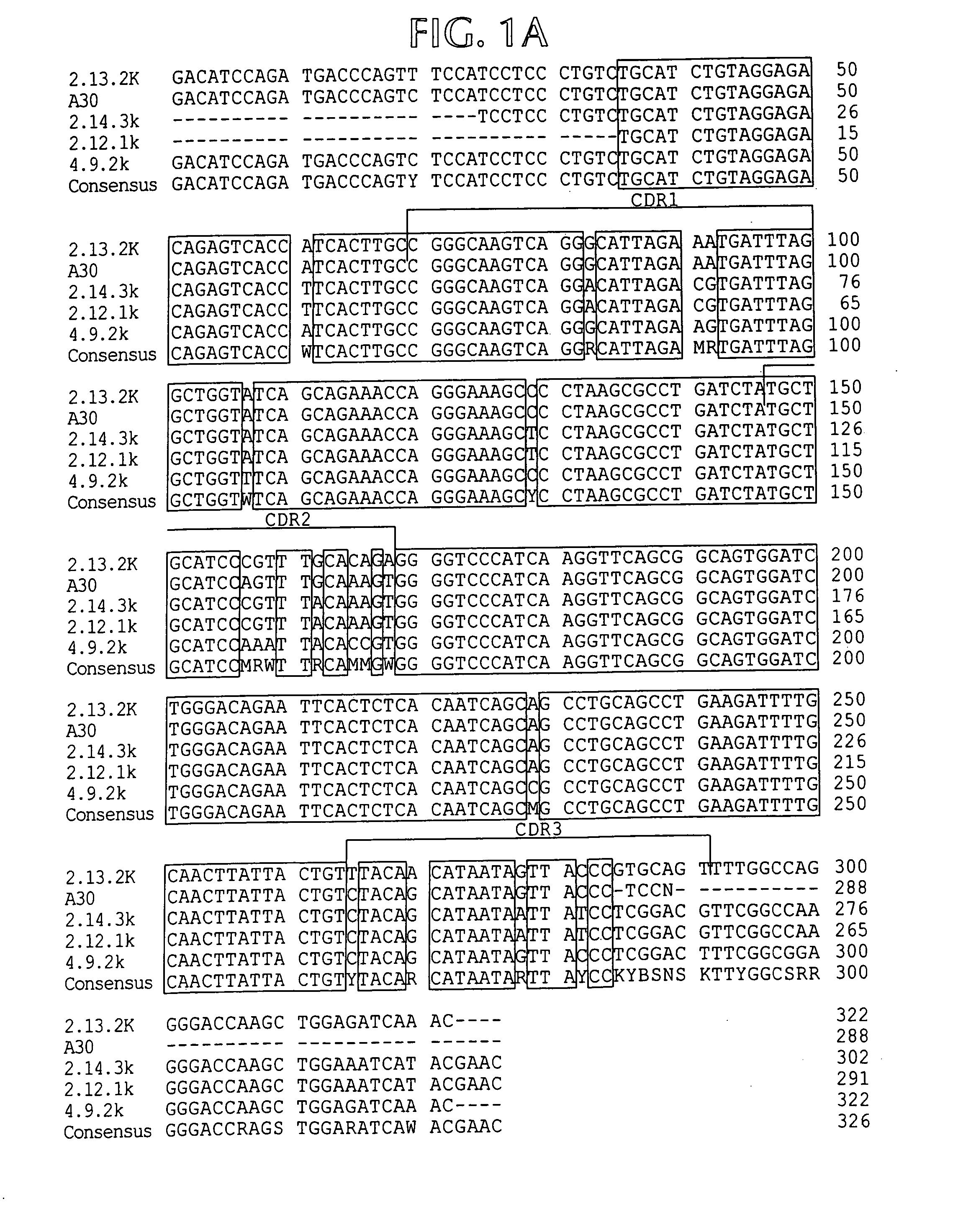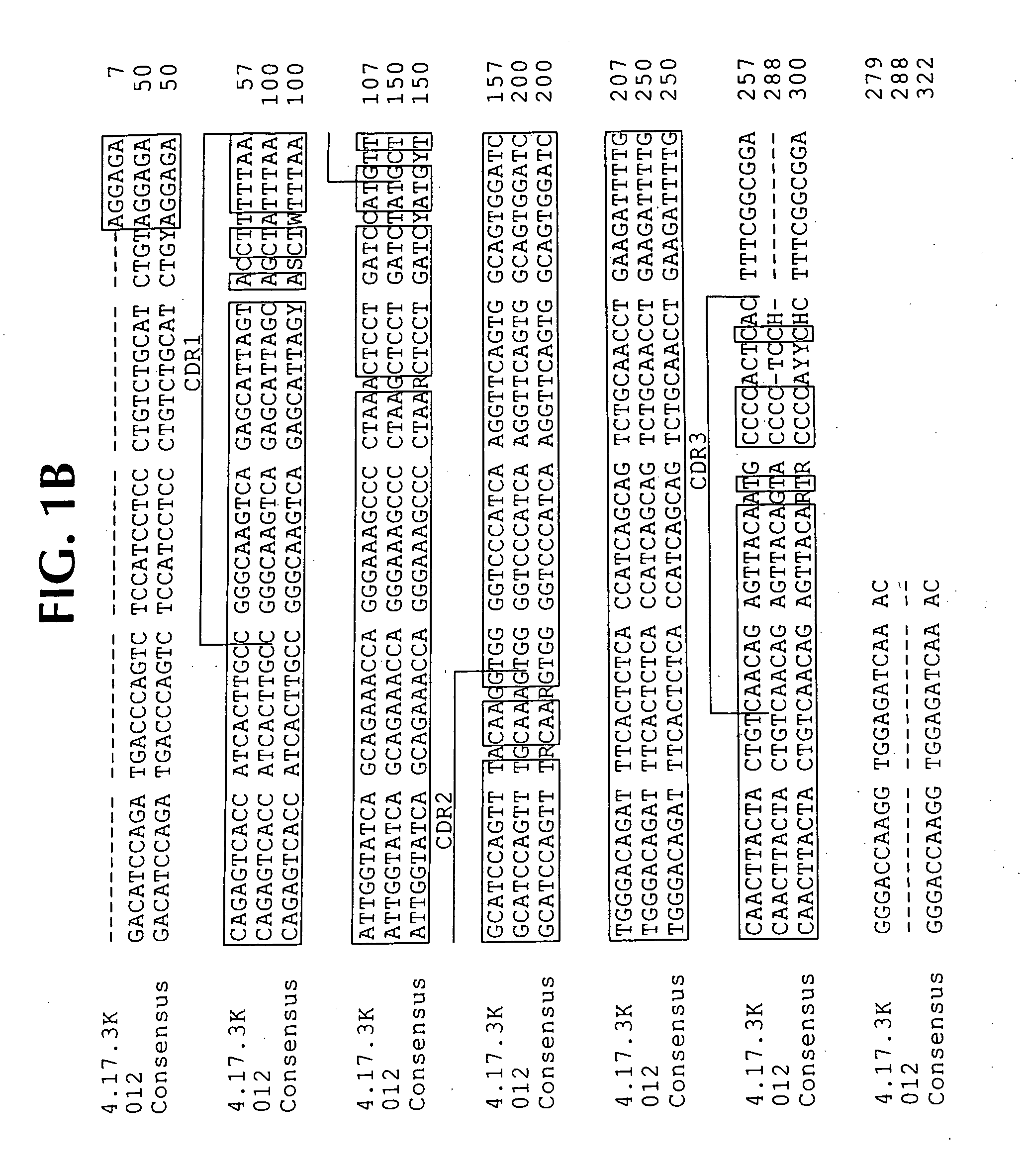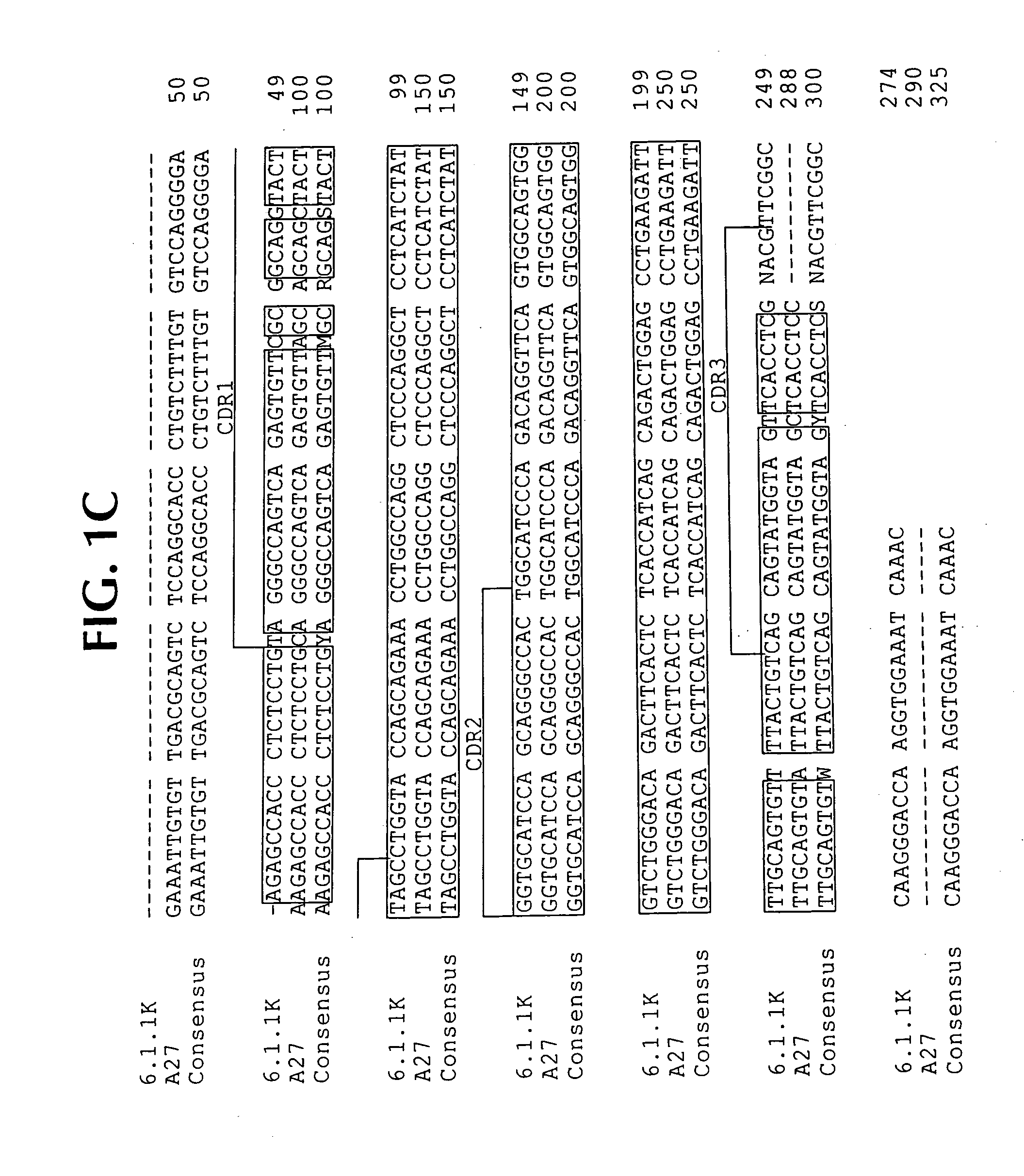Combination treatment for non-hematologic malignancies
a non-hematologic and combination therapy technology, applied in the field of combination therapy for non-hematologic malignancies, can solve the problems of slowing down the progression of advanced disease, reducing the risk of a new breast cancer developing in the unaffected breast, and reducing the risk of metastases eventually becoming refractory to hormonal treatment, so as to reduce the igf-1r phosphotyrosine signal
- Summary
- Abstract
- Description
- Claims
- Application Information
AI Technical Summary
Benefits of technology
Problems solved by technology
Method used
Image
Examples
example i
Anti-IGF-1R Antibodies in Combination with Docetaxel in the Treatment of Advanced Non-Hematologic Malignancies
[0104] Patients with advanced-stage non-hematologic malignancies (measurable disease defined by at least one lesion that can be accurately measured and whose size is ≧2 cm×1 cm by conventional computed tomography (CT) scan or ≧1 cm×1 cm by spiral CT scan) received a standard dose of docetaxel (TAXOTERE) (up to 75 mg / m2, using actual body weight to calculate body surface area (BSA)) by intravenous (IV) infusion over 1 hour on Day 1 only of each cycle. After the docetaxel infusion was completed, anti-IGF-1R antibodies as described herein were administered intravenously in a 5 mg / ml liquid formulation at a dose between 0.1 mg / kg and 10 mg / kg. The treatment regimen was repeated after 21 days, with escalation of the anti-IGF-1R antibody dose, and every 21 days thereafter until disease progression or unacceptable toxicity develops for a minimum of 2 cycles and a maximum of 17 cyc...
example ii
Anti-IGF-1R Antibodies in Combination with Paclitaxel and Carboplatin in the Treatment of Advanced Non-Small Cell Lung Cancer
[0107] In Part 1 of the study, patients with Stage IIIB or Stage IV or recurrent (after surgery / radiation), measurable, non-small cell lung cancer (NSCLC) who have received no prior chemotherapy received paclitaxel (TAXOL) at a standard dose of 200 mg / m2 by IV infusion over 3 hours. Prior to receiving paclitaxel, all patients received prophylactic anti-allergic / emetic medicines. Carboplatin (PARAPLATIN) was administered by IV infusion over 15-30 minutes; the dose was calculated based on the Calvert formula with a target area under the curve (AUC) of 6 mg / ml×min. After the carboplatin infusion was completed, anti-IGF-1R antibodies as described herein were administered intravenously in a 5 mg / ml formulation at a dose between 0.05 mg / kg and 10 mg / kg. The treatment regimen was repeated after 21 days, with escalation of the anti-IGF-1R antibody dose, and every 21 ...
example iii
Anti-IGF-1R Antibodies in Combination with Docetaxel and Epirubicin in Metastatic Breast Cancer
[0112] Patients having metastatic breast cancer with at least one lesion that can be accurately measured in two dimensions and whose size is ≧2 cm×1 cm by conventional CT scan or ≧1 cm×1 cm by spiral CT scan are given epirubicin 75 mg / m2 as a single 15 minute infusion. After a one hour pause, docetaxel (TAXOTERE) 75 mg / m2 is administered as a single IV infusion, followed by IV infusion of anti-IGF-1R antibodies as described herein at a dose between 0.05 mg / kg and 10 mg / kg. Prophylactic anti-emetics are given as appropriate. The treatment is repeated after 21 days with escalation of the anti-IGF-1R antibody dose, and every 21 days thereafter until disease progression or unacceptable toxicity develops for a minimum of 2 cycles and a maximum of 6.
[0113] Doses are escalated using an accelerated titration design utilizing a dose-doubling schema with 3-6 subjects per cohort. Within each new co...
PUM
| Property | Measurement | Unit |
|---|---|---|
| Therapeutic | aaaaa | aaaaa |
| Affinity | aaaaa | aaaaa |
Abstract
Description
Claims
Application Information
 Login to View More
Login to View More - R&D
- Intellectual Property
- Life Sciences
- Materials
- Tech Scout
- Unparalleled Data Quality
- Higher Quality Content
- 60% Fewer Hallucinations
Browse by: Latest US Patents, China's latest patents, Technical Efficacy Thesaurus, Application Domain, Technology Topic, Popular Technical Reports.
© 2025 PatSnap. All rights reserved.Legal|Privacy policy|Modern Slavery Act Transparency Statement|Sitemap|About US| Contact US: help@patsnap.com



